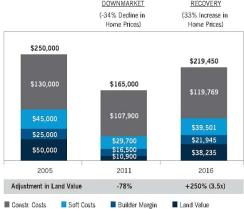Turkey’s latest gross domestic product figures, published April 1, showed that the economy stagnated in the fourth quarter, leaving it with a growth rate for 2012 of just 2.2 percent, well below the expected trend rate.
Analysts searched for local explanations for the disappointment, just as they had previously in Brazil, South Africa, and elsewhere. Sluggishness in Turkey, though, reflects a common global theme: growth in emerging market economies generally surprised on the low side in 2012, and common factors likely played a larger role than domestic considerations.
The chart below shows actual GDP growth in 2012 for a sample of 19 emerging market economies compared with consensus expectations early in the year. The consensus represents the average among four investment-bank forecasts, all made in the first quarter of 2012 — after the 2011 outcome had become fairly clear but before much information was available about the subsequent year.
Growth disappointed in roughly two-thirds of the economies — 12 out of 19 — with large misses in several. The median downside growth surprise for the whole group (including those that beat expectations) came to 0.4 percentage points. Such a geographically widespread forecast error likely owes not just to local policy missteps or structural shortcomings but also to global forces, including the manufacturing slump that persisted through much of the year and unexpectedly tight financial conditions thanks to euro area stress.
Looking at the chart on a country-by-country basis, several themes emerge:
• BRICs woes. All four of the benchmark emerging market economies (Brazil, Russia, India and China) disappointed in 2012, led by Brazil and India. Both of these economies may indeed be suffering medium-term effects of earlier policy mistakes, as potential GDP growth seems to have decelerated in each. The Indian authorities hope that recent market-friendly policy action there may turn the tide, and the Brazilian government has nodded in the direction of a less-interventionist approach as well. Additionally, Brazil will likely benefit in 2013 from the effect of last year’s aggressive interest rate cuts, though stubbornly high inflation means that the central bank will likely soon move in the other direction. Even South Africa – a partner of the big four that has been hoping to capitalize on the last letter in “BRICs” – fell short of expectations last year, with mining disruptions taking much of the blame. BRICs equity markets underperformed the broader EM index for the third consecutive year in 2012.
GDP growth surprise in 2012 versus “consensus” forecast

Chart 1
Source: JPMSI, JPMAM; data as of April 2013 |
• Mixed performance for commodity exporters. Last year’s outcomes did not owe simply to weak commodity prices putting downward pressure on emerging market growth. In Latin America, for example, although two major commodity producers — Brazil and Colombia — underperformed expectations, the even more basic material-dependent economies of Chile and Peru surprised favorably, each growing by roughly 6 percent. And in emerging market Asia, the two net commodity exporters, Malaysia and Indonesia, did fairly well, while net commodity importers struggled. Heavy manufacturing exposure, rather than commodity dependence, seems to have accounted for growth weakness last year. Mexico, which exports mostly to the U.S., where growth broadly matched expectations, represents an exception to the manufacturing-weakness story.
• In North Asia, China squared. While China grew quite slowly by its own standards in 2012, it did come within half a percentage point of expectations. Korea and Taiwan, however, stumbled badly, missing the consensus forecast by 1.5 and 1.8 percentage points, respectively. Both suffered from the global manufacturing downturn and did not deploy aggressive policy responses (as China did to some extent in the second half of 2012). Moreover, extended weakness in the global tech cycle weighed particularly heavily on these economies.
• Association of Southeast Asian Nations (Asean) superstars. Three of the five largest upside surprises in 2012 came in the Asean region: the Philippines, Thailand and Malaysia. Thailand benefited from a larger-than-expected post-flood bounce, but the broader Asean story looks quite healthy: strong domestic demand, good creditworthiness indicators and a generally satisfactory export mix featuring some commodities but also relatively low-cost tech manufacturing that has done better than higher-end items. Stock markets believe this strong performance has continued into 2013 as the Philippines, Thailand, and Indonesia have all posted double-digit increases during a very weak period for EM equities overall. The year-to-date fall in the Malaysian market stands out but likely stems from uncertainty ahead of the general election there.
Coming into 2013, the consensus view looked for reacceleration in emerging markets growth, building on the China-centered pickup observed at the end of last year. Subsequent experience has been somewhat disappointing. With the euro area still stuck in mild recessionary territory, analysts have cut their outlook for EMEA growth. And the data flow from Asia has turned choppy, though the usual caveat applies about over-interpreting short-term fluctuations in the numbers around the Chinese new year. Disappointingly poor performance of emerging markets assets thus far in 2013, especially equities, likely stems from ongoing disappointments in growth. Our forecast calls for gradual improvement in emerging markets growth as 2013 unfolds. If that strengthening materializes, it should create a more favorable climate for cyclically sensitive emerging markets assets. At the same time, consensus forecasts continue to expect at least some of that pickup, likely making it difficult for emerging markets to deliver a large favorable surprise.
Michael Hood is a market strategist for J.P. Morgan Asset Management.






